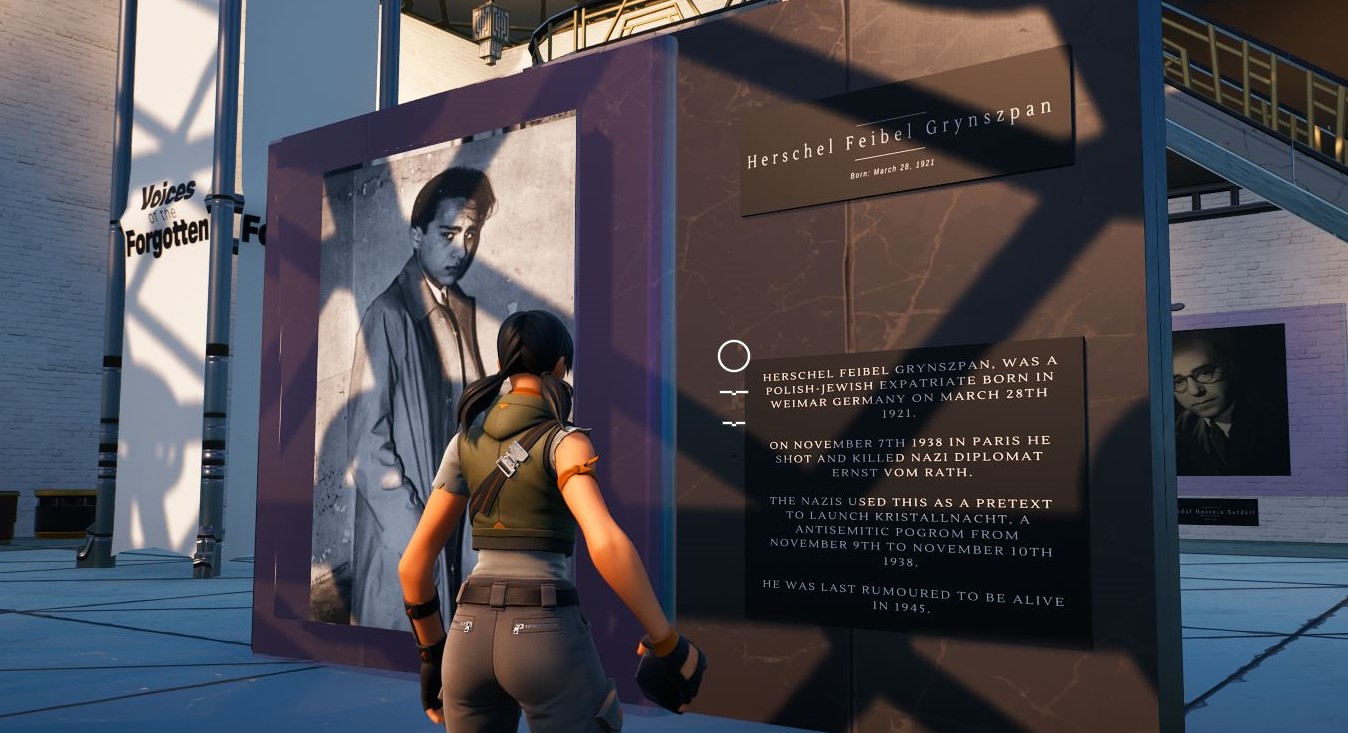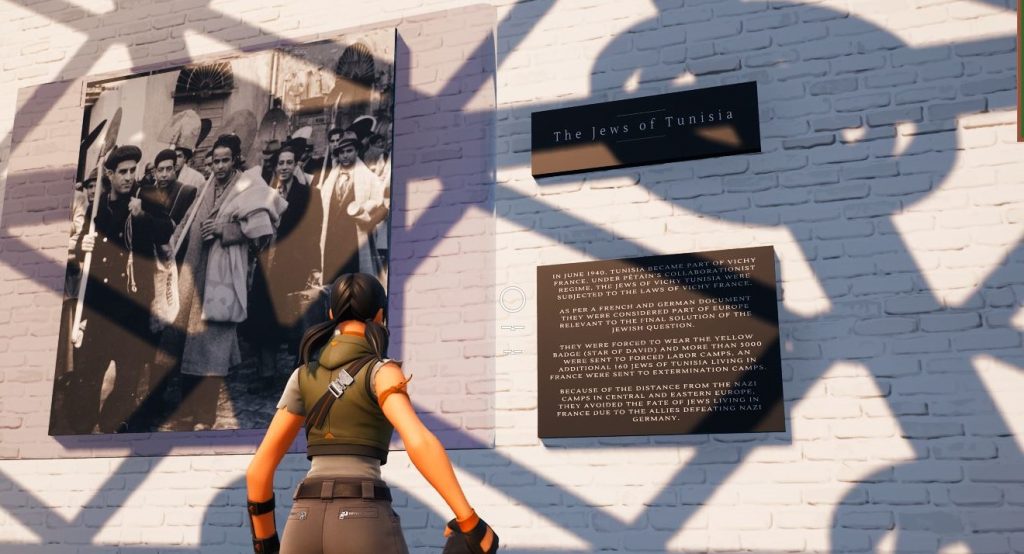Educating young people about the Holocaust is increasingly urgent work. Recent studies paint a grim picture of meager Holocaust knowledge among millennials and Gen Z-ers, with half of U.S. respondents unable to name a single concentration camp established during World War II. Luc Bernard, an independent game developer, has spent more than a decade trying to hammer in the Holocaust’s gruesome realities to the gamer set. When he announced he was writing a Holocaust-themed title in 2008, the backlash was swift. Undeterred, he eventually partnered with publisher Epic Games to release The Light in the Darkness, billed as a free educational game that recounts the story of a working-class family of Polish Jews in France during the Holocaust.
Bernard’s latest project involves establishing a Holocaust museum in Fortnite, the ultra-popular (and ultra-violent) multiplayer game that recently opened up real estate in its virtual worlds for users to freely develop. Currently the most popular metaverse with 400 million users, Fortnite—also owned by Epic Games—has the potential to be Bernard’s most impactful stage yet. The museum, which opened earlier this week, aims to teach visitors “about the heroes who saved Jewish lives during the Holocaust and also the Jewish members of the Resistance,” he says. Displays focus on lesser-known aspects of the Holocaust, such as the Tripolitania riots, a 1945 attack on Jews in North Africa. The information, however, is limited in scope—placards usually have a few sentences, and text was pulled from Wikipedia.


